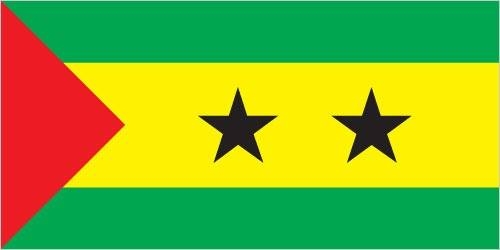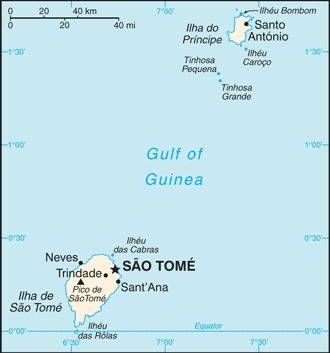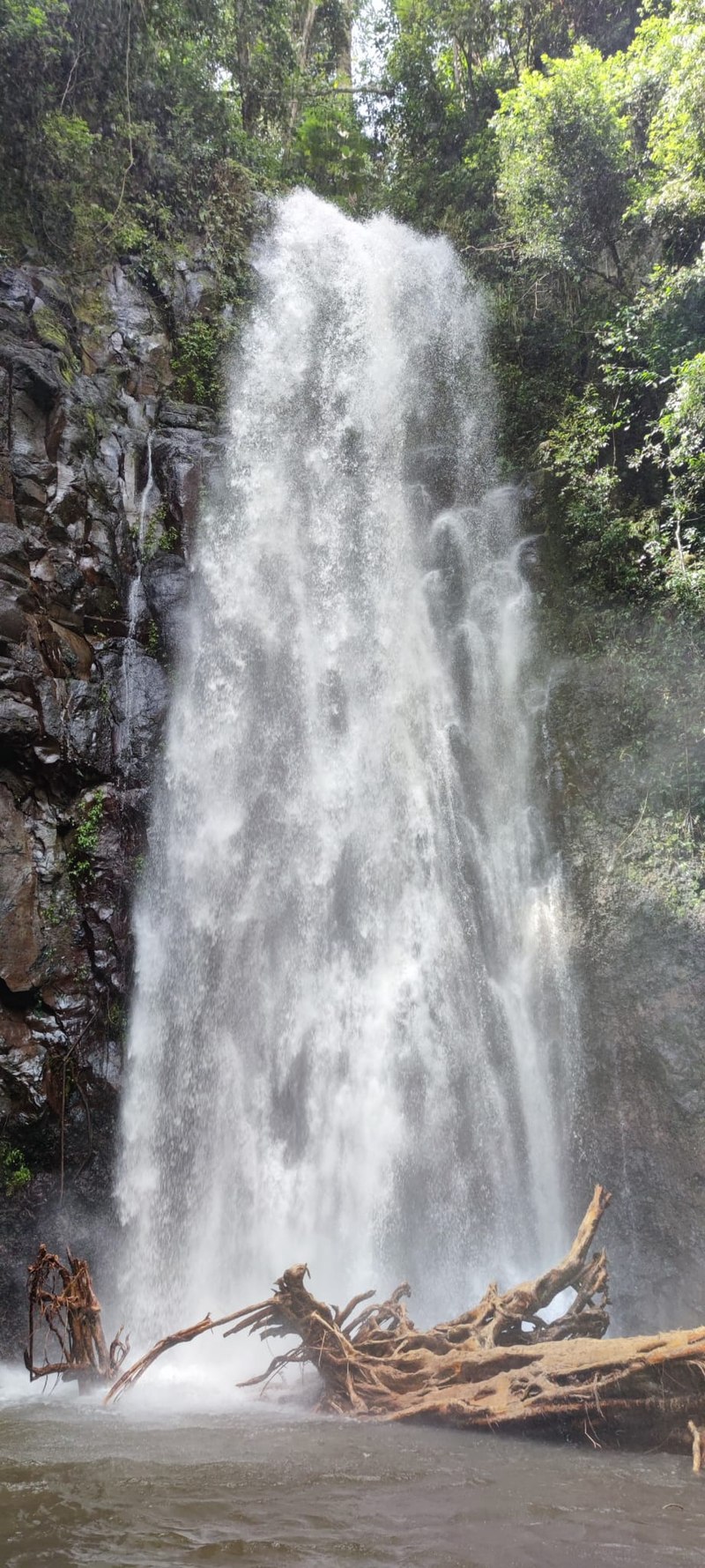217 Sao Tome & Principe

Three horizontal bands of green (top), yellow (double width), and green with two black five-pointed stars placed side by side in the center of the yellow band and a red isosceles triangle based on the hoist side. Green stands for the country’s rich vegetation, red recalls the struggle for independence, and yellow represents cocoa, one of the country’s main agricultural products. The two stars symbolize the two main islands.
Flag courtesy of the CIA World Factbook

Map courtesy of the CIA World Factbook

Waterfall in São Tomé Island
Government
According to Britannica, under the constitution of 1990 (since amended), the president, who is head of state, is directly elected to a five-year term and is limited to two successive terms. The prime minister serves as the head of government. The legislature is unicameral, with a 55-seat National Assembly. Assembly members are elected by popular vote and serve four-year terms. In April 1995 Príncipe became an autonomous region.
The political and judicial structures adopted at independence in 1975 were those of a single-party state modeled on the Soviet example, but the regime never formally proclaimed its adherence to Marxism-Leninism. Free elections for the legislative assembly and the presidency were established by the constitution of 1990 and first held in 1991. At that time close ties with eastern European countries and Cuba were replaced by improved relations with Portugal, France, and other Western countries.
National Institute of Civil Aviation (INAC)
The National Institute of Civil Aviation (INAC) was created through Decree-Law No. 44/98 of 30 December. It is the State body that holds the attributions of the “Aeronautical Authority”. As an Aeronautical Authority, it advises the Government on the definition of policies for civil aviation, collaborating in the elaboration of legal diplomas and regulations. It coordinates, supervises, controls, supervises and inspects all activities related to civil aviation throughout the national space and under the jurisdiction of São Tomé and Príncipe.
Airspace
SkyVector – Google Maps – ADS-B Exchange
ICAO countries publish an Aeronautical Information Publication (AIP). This document is divided into three parts: General (GEN), En Route (ENR) and Aerodromes (AD). ENR 1.4 details the types of airspace classes they chose to adopt from classes A through G.
Sao Tome and Principe AIP
Drone Regulations
Law No. 3/2021 – Aeronautical Code
Advanced Air Mobility (AAM) Regulations & Policies
None found by the author.
However, should you, the reader, happen to stumble across something to the contrary, please email the author at FISHE5CA@erau.edu and you may be mentioned in the ACKNOWLEDGEMENTS section of this book by way of thanks for contributing to this free eBook!
Advanced Air Mobility (AAM) News
None found by the author.
However, should you, the reader, happen to stumble across something to the contrary, please email the author at FISHE5CA@erau.edu and you may be mentioned in the ACKNOWLEDGEMENTS section of this book by way of thanks for contributing to this free eBook!
Short Essay Questions
Scenario-Based Question
You have been hired by a Drone Startup Company. Your boss has immediately assigned this job to you.
They need you to prepare a one-page memo detailing the legalities of using a drone to film waterfalls in Sao Tome Island.
They need you to mention any national laws and local ordinances.
They specifically want to know what airspace (insert pictures) you will be operating in and whether or not you need an airspace authorization.
Does it matter whether or not you are a citizen of the country?
Lastly, there is a bonus for you if, as you scroll through this chapter, you find any typos or broken links!
Short Essay Questions
- What are the drone categories?
- How is registration addressed?
- How is remote ID addressed?
- What are the model aircraft rules?
- What are the commercial drone rules?
- Are there waivers or exemptions to the rules? If so, for what?
- Would you share a link to an interactive airspace map?
- How is BVLOS addressed?
- How can you fly drones at night?
- How can you fly drones over people?
- Where do you find drone NOTAMs?
- What are the rules for drone maintenance?
- What are the rules for an SMS program?
- What are some unique rules not mentioned above?
- What are the C-UAS rules?
- What are the AAM rules?

